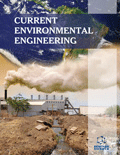Abstract
Background: Dye molecules are non-biodegradable which leads to pollution of water. There it’s important to treat these dye molecules prior to their discharge into water. There are various methods to treat the polluted water, but which has certain drawbacks with respect to their efficacy. The aim of this paper to introduce ultrasonically synthesized polymer hydrogel for removal of dye molecules from effluent.
Methods: Polyacrylic acid based synthesis of hydrogel was carried out with the aid of acoustic cavitation. Encapsulation and uniform dispersion of cross linker (Halloysite nanoclay) has been efficiently carried due to ultrasonic irradiation produced by acoustic cavitation. Also Auramine O dye was considered for dye adsorption study.
Results: The dye absorptivity of the synthesized hydrogel was analysed for removal of Auramine O dye. The adsorption study was carried out under various pH values for 5.5 hours. It was perceived that highest % removal of dye occurred at pH 11 with contact time of 5 hours.
Conclusion: Prepared hydrogel was examined for its swelling capacity using deionized water. From swelling behavior data it has been observed that synthesized hydrogel has good swelling capacity and follows non-Fickian diffusion. From pH study it was observed that percentage removal of dye was increasing linearly with respect to pH up to 12.The optimum values for pH and contact time for highest dye removal (78.93%) are thus found out to be 11 and 5 hours respectively. The adsorption isotherm model study showed that Langmuir adsorption isotherm model well fitted with the experimental data.
Keywords: Halloysite nanoclay, poly(acrylic acid), hydrogel, Auramine O dye, effluent, non-Fickian diffusion.
Graphical Abstract
 20
20 2
2

